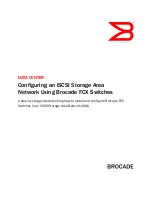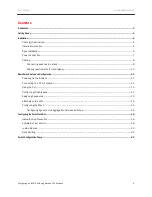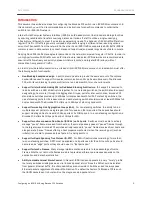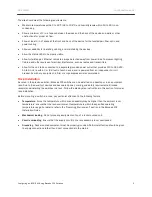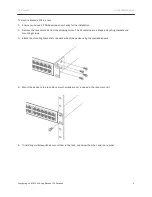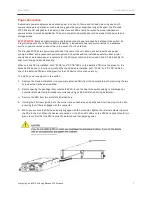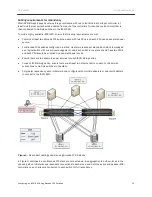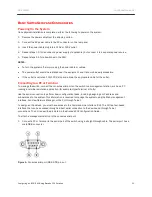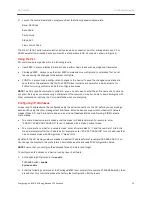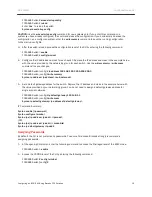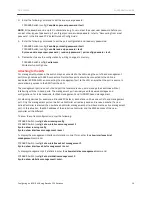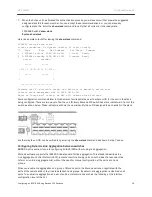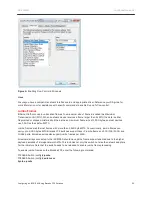
DATA CENTER
CONFIGURATION GUIDE
Configuring an iSCSI SAN Using Brocade FCX Switches
5
The site should meet the following requirements:
•
Maintain temperatures within 0 to 40
ο
C (32 to 104
ο
F) and humidity levels within 5% to 95%, non-
condensing.
•
Allow a minimum of 3 in. of space between the sides and the back of the device and walls or other
obstructions for proper air flow.
•
Allow at least 3 in. of space at the front and back of the device for the twisted-pair, fiber-optic, and
power cabling.
•
Allow accessibility for installing, cabling, and maintaining the devices.
•
Allow the status LEDs to be clearly visible.
•
Allow for twisted-pair Ethernet cables to always be routed away from power lines, fluorescent lighting
fixtures, and other sources of electrical interference, such as radios and transmitters.
•
Allow for the unit to be connected to a separate grounded power outlet that provides 110 to 240 VAC,
50 to 60 Hz, is within 2 m (6.6 feet) of each device, and is powered from an independent circuit
breaker. As with any equipment, a filter or surge suppressor is recommended.
Rack Installation
As noted in the previous section, Brocade FCX switches can be installed on a desktop or in an equipment
rack. Due to the density of devices and associated power, cooling, and safety requirements, Brocade
recommends installing the switches in a rack. Follow the step-by-step instructions in this section for proper
rack installation.
Before mounting a switch in a rack, pay particular attention to the following factors:
•
Temperature.
Since the temperature within a rack assembly may be higher than the ambient room
temperature, ensure that the rack-environment temperature is within the specified operating
temperature range. For details, refer to the “Operating Environment” section in the
Brocade FCX
Installation Guide
.
•
Mechanical loading.
Do not place any equipment on top of a rack-mounted unit.
•
Circuit overloading.
Ensure that the supply circuit to the rack assembly is not overloaded.
•
Grounding.
Rack-mounted equipment must be properly grounded. Particular attention should be given
to supply connections rather than direct connections to the mains.

